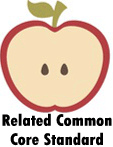Open and Closed Syllables Worksheets

We call each unit of pronunciation a syllable. It can be composed of just a vowel or a vowel with nearby consonants. Syllables are classified into six different categories or types. The types that are pretty easy to master are open and closed syllables. Open syllables are known as this because they are not closed by a consonant. They end in a vowel and produce a long sound. This means that the sound the same as the name of vowel that is present. Closed form ends in consonant, that is what makes them closed. They produce a short sound because the vowel is followed by a consonant. As a result, the sounds that they give off differ from the name of the letter. These worksheets will help you learn how to classify and ultimately how to pronunciate syllables in a series of words that are new to you.
Open and Closed Syllables Worksheets To Print:
The First One - Indicate whether each word has an open or closed first
syllable.
One or Two - Recognize and classify the words into columns.
Classify Me! - Write open or closed on the long line. Write each syllable
on the shorter lines. Follow the example.
Are You Open? - Let's take some type to focus on the long sounds.
VCV Rules - Divide each word into syllables using the VCV rule. Write each
syllable on a line.
One of Two - You are given a pair of words to pull your thoughts from.
What Are You? - Take your time to evaluate which column these words should be placed in.
Bigger Words - We move students towards more unique words that may be new to students.
Color Me Pathway - Color the open syllable words with one color. Color the
closed syllable words with another color. Then write the words in the correct columns.
Door Opener - Write the words in the correct columns. Then add additional
words that know to each column.
Use the Example - Look at the pictures. Say the word. Write the word.
Divide it into syllables.
The Slasher - Write the word. Divide it into syllables with a slash (/).
Why Is This an Important Tool?
You may have completed this section and be asking yourself why you even need to learn this type of classification. The is a fundamental decoding tool to help you be a strong reader and speller. It is all about learning how to recognize new words or being able to produce them yourself. A good example to illustrate this to you is if we imagined that a youngster was reading and came across the word (shirt). This would not cause them to get rattled at all because of this technique. Using this technique, they can determine if that (i) is a short or long sound. As you can see the vowel is followed by a consonant, so this is a closed syllable and will produce a short sound. So, the pronunciation of the vowel (i) with not sound like the name of that letter. Having that information in hand, they will be able to decode the word and move on with their reading. That is a quick example of where it can help you when you are reading.
This procedure can also be used to help you spell. If one of your students did not automatically know how to spell the word (bottom). They were writing something where they wanted to use the word (bottom) and they knew how to pronunciate the word, just not spell it. A common question they may have is how many ts the middle of the word had. If they were not sure which of these spellings (botom or bottom) to use, they could apply this technique. If they know how to pronunciate the word, they will quickly realize that a short vowel sound is given off by the word. This would mean that it a closed syllable and would need to end in a consonant and thus require two ts (bottom).
